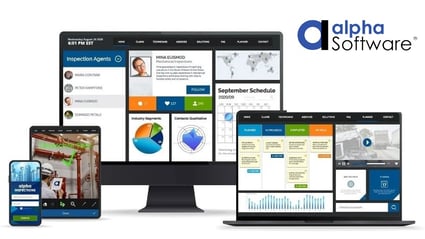![]() Machine learning and AI can offer tremendous benefits to enterprises of any size and in any industry. But there’s a dirty little secret to their use that many companies don’t know: Bad data is rampant and can make those technologies ineffective.
Machine learning and AI can offer tremendous benefits to enterprises of any size and in any industry. But there’s a dirty little secret to their use that many companies don’t know: Bad data is rampant and can make those technologies ineffective.
(Originally posted in 2019 and updated for 2025: Why AI Still Falls Short Without the Right Data)
We Called It Early—And It Still Holds True
Back in 2019, I published this post about the achilles heel of AI, which made one thing clear: the biggest threat to artificial intelligence isn’t the model; it’s the data feeding it. That article struck a nerve, because it echoed something every AI practitioner knows deep down: if your data is a mess, your AI project is in trouble.
Fast forward six years. AI has taken off in unexpected ways. From chatbots to intelligent agents to predictive models, companies are embedding AI into everything. Consumers are using it in their daily lives. But here’s the irony: while the tools have advanced, the weakest link remains exactly the same: bad data.
In 2023, Forbes published a story using the exact headline I had already written: “The Achilles Heel of AI That No One Is Talking About.” They weren’t wrong, but Alpha Software got there first. And now, in 2025, it’s time to revisit that warning with fresh eyes.
Poor Data: The Biggest Barrier to Successful Artificial Intelligence Efforts
Back in 2019, we sourced an AI/Machine learning global study from Refinitiv. It warned that poor quality data “is the biggest barrier to the adoption and deployment of machine learning... The adage ‘garbage in, garbage out’ has never been more pertinent. If data is the new oil, then much of it still needs a lot of refining, and that’s a heavy lift for the consumers of data.”
2019
2025
Sixty-six percent of respondents to the Refinitiv survey for the study said that poor data quality impacted their ability to effectively adopt and deploy AI and machine learning. The survey also found that three of the top four challenges when working with new data for machine learning revolved around poor data quality: “accurate information about the coverage, history, and population of the data,” “identification of incomplete or corrupt records,” and “cleaning and normalization of the data.”
The study noted that at the AI and Data Science in Trading conference in New York that year, “Several presenters talked about how difficult it is to find data of the appropriate quality and that some groups can spend 80%–90% of their time normalizing and cleaning it.”
New Tools, Same Old Problem: Dirty Data
 In 2025, there is more talk about AI than ever before, but one key fact remains true: You can’t build a sturdy house on a cracked foundation. It doesn’t matter how fancy your model is, if the data going into AI is flawed, the results coming out will be, too.
In 2025, there is more talk about AI than ever before, but one key fact remains true: You can’t build a sturdy house on a cracked foundation. It doesn’t matter how fancy your model is, if the data going into AI is flawed, the results coming out will be, too.
Updated stats tell the story:
-
81% of companies say data quality is holding back their AI efforts (Qlik, 2024)
-
85% of AI projects fail, with poor data cited as a top reason (CTO Magazine, 2025)
-
AI-related failures jumped over 56% in the past year, many linked to bad inputs (Stanford, 2025)
And we’re not talking about minor errors. We’re talking about mislabeled training sets, incomplete records, and outdated paper forms being manually typed in days later. This is how bias creeps in, trust erodes, and projects stall or quietly get shelved.
AI Can’t Evolve If It's Stuck in the Mud
 Something else is happening: we’re starting to run out of clean, human-created data. That’s not speculation—it’s a warning that came from Elon Musk earlier this year. As more models train on synthetic or AI-generated content and sensors, there’s a growing risk of what some are calling an “AI echo chamber.”
Something else is happening: we’re starting to run out of clean, human-created data. That’s not speculation—it’s a warning that came from Elon Musk earlier this year. As more models train on synthetic or AI-generated content and sensors, there’s a growing risk of what some are calling an “AI echo chamber.”
If we keep feeding machines the same regurgitated data, the originality, nuance, and human insight begin to fade. We start seeing hallucinations, flat outputs, and flawed reasoning. Why? Because the input is no longer grounded in reality.
The solution isn’t more data—it’s better "human" data.
The Rise of AI Agents Raises the Stakes
We’re now seeing a shift from reactive tools to autonomous AI agents. These systems can make decisions, take actions, and perform tasks across systems in real time. It’s exciting… and risky.
These agents demand constant access to accurate, up-to-date information. But many organizations still rely on data that’s scattered, outdated, or collected manually. Paper forms, disconnected spreadsheets, and inconsistent labeling simply won’t cut it anymore.
 In fact, 78% of enterprise tech leaders say their current data infrastructure can’t support real-time AI agents (TechRadar, 2025). That’s a big red flag.
In fact, 78% of enterprise tech leaders say their current data infrastructure can’t support real-time AI agents (TechRadar, 2025). That’s a big red flag.
And Now, It’s the Law
This isn’t just a best practice issue—it’s becoming a legal one.
The EU AI Act, passed in 2024, now requires companies using “high-risk” AI systems to audit their data quality and ensure it’s free of bias. That includes AI used in hiring, safety inspections, healthcare, and financial services.
Translation: if your data collection methods haven’t been updated since clipboards and carbon copies, you could be facing more than poor performance—you could be facing fines or regulatory blowback.
5 Steps to Better Data Quality
There’s a simple truth behind every successful AI system: it starts with high-quality, reliable, structured data.
If your company still relies on pen-and-paper forms, unverified spreadsheets, or manual re-entry into multiple systems, your first move shouldn’t be to adopt AI—it should be to clean up how you collect and manage data.
That means:
-
Moving to digital forms and mobile workflows
-
Automating data capture in the field or on the job site
-
Eliminating transcription errors and delays
-
Validating data at the point of entry
-
Creating a unified, searchable system of record
This doesn’t have to be hard—or expensive.
How to Make Sure Your Human Data Is High Quality
One of the best ways to make sure that your data comes from a trusted source and is easily accessible is to use mobile forms and apps to acquire it. That way, you can better ensure data quality and make this data instantly accessible when and where it’s required.
 Related Whitepaper: A Valuable Guide to Successful Artificial Intelligence
Related Whitepaper: A Valuable Guide to Successful Artificial Intelligence
To benefit your AI models, you must trust the data behind them. Alpha Software works with customers to help quickly and comprehensively collect data they can trust for all their business needs. The Company has produced a guide to help companies make sure they
The guide, “Adding Artificial Intelligence Capabilities to Your Mobile Apps,” notes that mobile apps are the missing link in AI implementation. They help improve data quality and deliver accurate, trusted data.
The guide explains, “Traditional data collection often comes from multiple sources, including manual data entry and paper forms. It could take weeks to get handwritten forms completed in the field into corporate systems of record, and often the results are prone to errors. If your data isn’t accurate, your AI results will be lackluster, if not completely wrong. As a result, it’s critical to ensure that your AI effort is based on accurate, timely data. Modern mobile forms that incorporate best practices for field data collection are critical to enabling solid AI.”
The guide will help you make sure your AI data is of the highest quality and also aid you in thinking through some of the key market factors, technology starting points, and business examples for applying AI to your next business app. Get a free copy of the AI guide for trusted data.
Alpha Software: A Leader in Trusted Data
 Alpha Software customers trust us to handle sensitive government, patient, manufacturing quality and other data. Our Company has over a decade of experience building database apps and solutions for customers that require secure, timely, comprehensive and accurate data. For example, Alpha Software offers the leading quality management software for manufacturers, which collects more accurate manufacturing data to power trusted AI models.
Alpha Software customers trust us to handle sensitive government, patient, manufacturing quality and other data. Our Company has over a decade of experience building database apps and solutions for customers that require secure, timely, comprehensive and accurate data. For example, Alpha Software offers the leading quality management software for manufacturers, which collects more accurate manufacturing data to power trusted AI models.
We’ll Help You Fix the Data Problem, Fast
At Alpha Software, we’ve spent years helping companies move away from clunky paper processes and outdated systems. Our platform—and our team—can build secure, modern data collection apps that tie into your existing workflows.
Here’s the best part: we’ll build it for you.
If you’re still using paper, spreadsheets, or disconnected tools to gather business-critical data, let us help. We’ll take your form—whatever it looks like today—and turn it into a digital app with a dashboard that makes your data immediately usable. Fast turnaround, no large IT initiative, and no obligation.
Don’t let weak data sink your AI ambitions.
Book a meeting with us, and we’ll show you what better data looks like—starting with the tools you already use. Whether you want to go fully digital, improve inspection accuracy, or lay the groundwork for AI, we’ll help you get there. We're ready to help with fast, reliable apps and solutions that deliver data you can trust.
The Achilles’ heel of AI hasn’t changed, but fixing it is easier than you think.
Further Reading: Want to Be AI-Ready? Fix Your Data First—Here’s Why and How







Comment